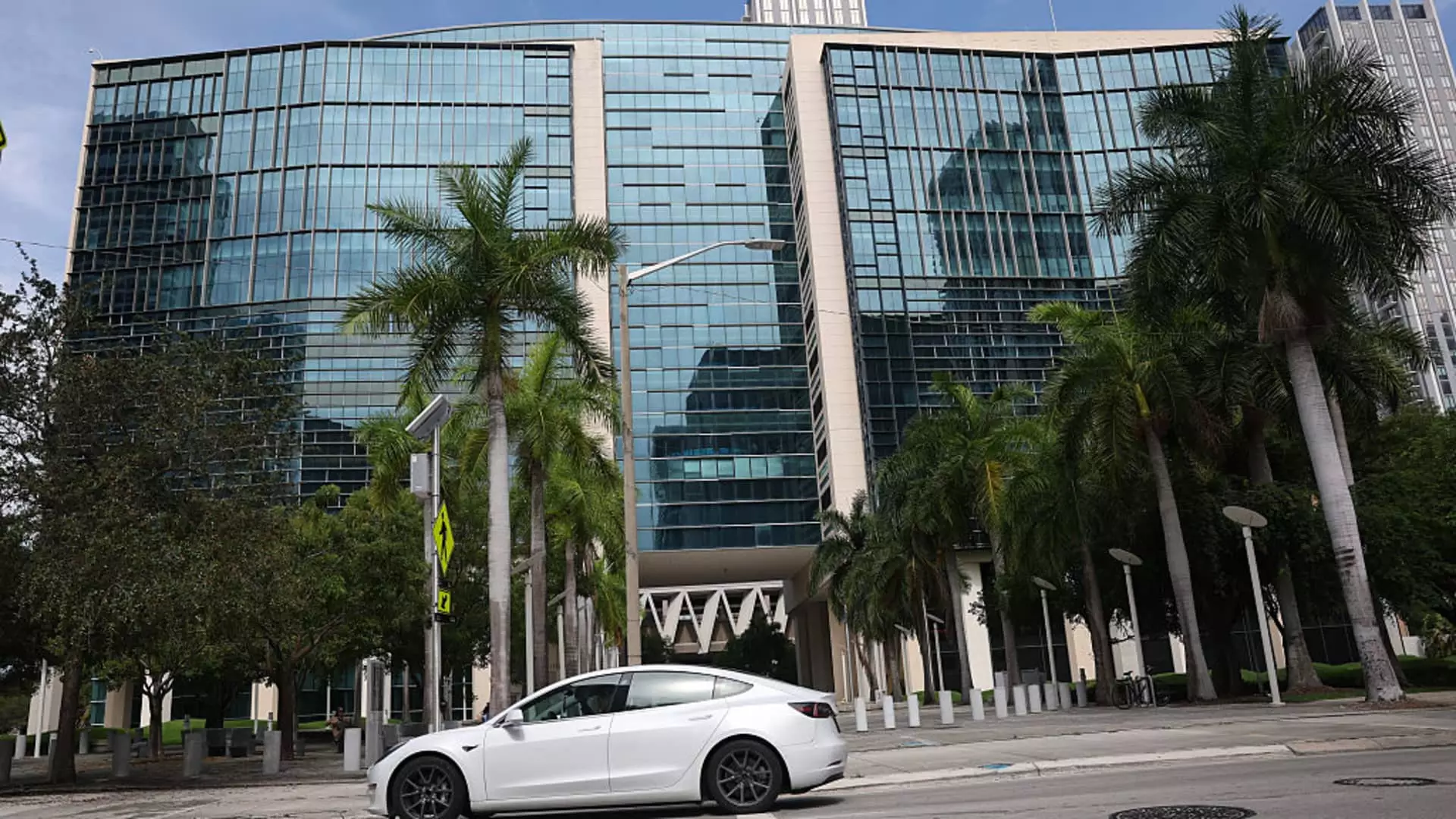The looming legal battle against Tesla marks a significant inflection point in the rapidly evolving landscape of autonomous driving technology. As the first of its kind to reach a federal court, this case casts a spotlight not only on Tesla’s Autopilot system but also on the broader implications of putting semi-automated vehicles on public roads. While Tesla has long championed its Autopilot as a transformative step toward safer, cutting-edge transportation, this trial raises haunting questions about the true safety and reliability of these systems—questions that the company’s leadership, especially Elon Musk, must confront head-on.
What makes this particular case so consequential is the stark tragedy at its core: a young woman’s death and the lasting injuries of her loved ones, all linked to a vehicle still marketed as a level of advanced driver assistance. The plaintiffs’ hefty demand for damages—over $345 million—underscores not just the personal pain but also the perception that Tesla’s promises may have masked serious safety flaws. The case becomes a litmus test: are Tesla’s Autopilot systems genuinely safe when used as intended, or are they dangerously flawed prototypes that public safety has been secondary to corporate image and profit?
Deception and Overconfidence: The Flaws in Tesla’s Marketing Strategy
Central to the lawsuit are accusations of misrepresentation and potentially reckless oversight. Critics argue that Tesla, backed by Musk’s charismatic assurances, has created a hazardous environment by overstating the capabilities of Autopilot. Over the years, Musk has consistently promised revolutionary breakthroughs in autonomous tech—claims that often seemed overly optimistic, bordering on promotional hype. This unchecked optimism fostered a dangerous culture of overreliance among consumers, who believed that their vehicles could handle driving tasks more safely than they realistically could.
This narrative of overconfidence has profound implications. By touting Autopilot as a nearly autonomous system, Tesla implicitly encouraged drivers like George McGee to delegate full attention to their vehicles while multitasking—an obviously perilous choice that ultimately resulted in tragedy. The lawsuit suggests that Tesla’s decision to market these systems as “self-driving” was not just a marketing tactic but a potential violation of consumer safety, especially when the technology’s limitations were poorly communicated or misunderstood.
The Ethical Dilemmas of Innovation versus Oversight
Tesla’s relentless pursuit of innovation, often at the expense of thorough safety testing, opens a Pandora’s box of ethical questions. Should automakers prioritize rapid technological advancement over exhaustive validation? In Tesla’s case, responses from the company emphasized that drivers are responsible for understanding their vehicle’s capabilities, thus shifting blame onto individual users rather than acknowledging systemic flaws. This stance reveals a troubling attitude: systemic safety issues are downplayed, and driver misconduct is implied as the root cause.
However, the court’s engagement with the case indicates that such arguments may be insufficient in the face of evident tragedy. Judge Beth Bloom’s remarks—implying Tesla’s reckless disregard—highlight that regulatory bodies and the courts are increasingly scrutinizing whether technology firms are acting responsibly or merely pushing the boundaries for profit. If Tesla is held liable, it could set a precedent that companies must prioritize safety and transparency over marketing bravado, fundamentally reshaping the autonomous vehicle industry.
The Broader Impact: Rethinking Trust in Automated Vehicles
This case signals a turning point in how society perceives self-driving technology. For years, many enthusiasts and investors have believed in the promise of Tesla’s Autopilot as a groundbreaking safety measure that will eventually revolutionize road safety. However, the tragic reality revealed in the courtroom suggests that enthusiasm must be tempered with skepticism and rigorous oversight.
The core lesson here is that technological progress with autonomous vehicles cannot be justified by corporate narratives or superficial safety claims. Genuine safety advancements demand transparent communication, strict testing standards, and acknowledgment of limitations. Tesla’s prominent role in shaping the industry means that the outcome of this trial could influence regulatory policies, industry standards, and consumer trust for years to come. An adverse verdict against Tesla may serve as a stark reminder that innovation must go hand in hand with responsibility, especially when lives are on the line.
In the final analysis, this legal confrontation exposes the dangerous allure of unregulated technological optimism. It challenges us to reconsider not just Tesla’s practices but also our own blind faith in automated systems. As the court delivers its judgment and the world watches, it becomes painfully clear that the path toward safe autonomous driving is fraught with ethical pitfalls, corporate overreach, and human tragedy—a journey that demands vigilance, accountability, and an unwavering commitment to real safety.

